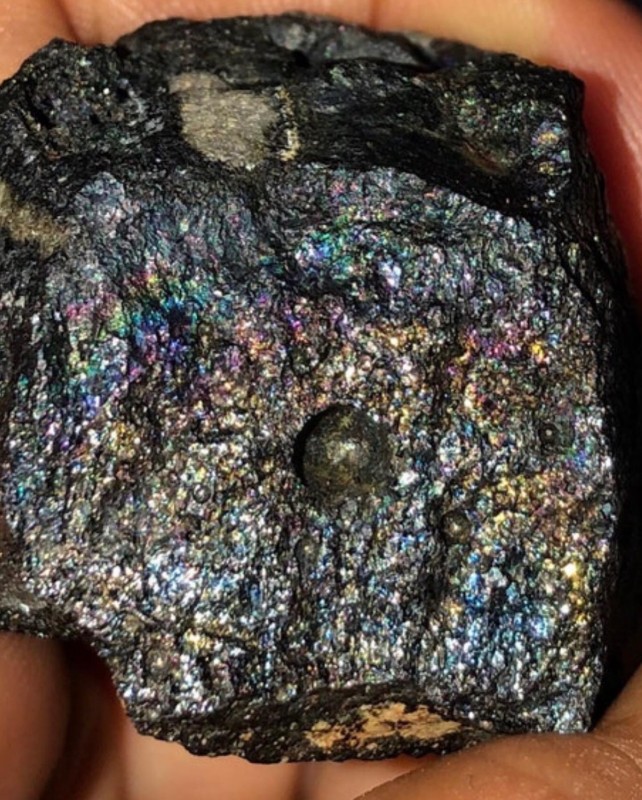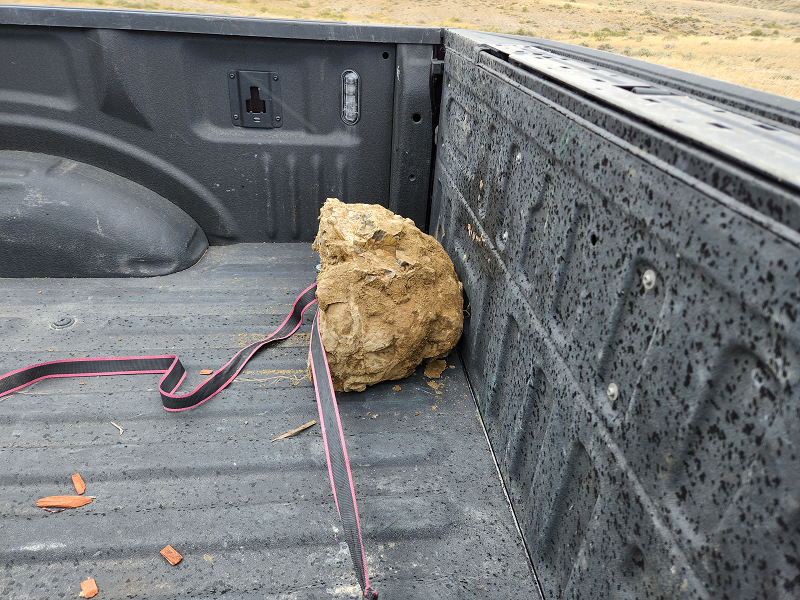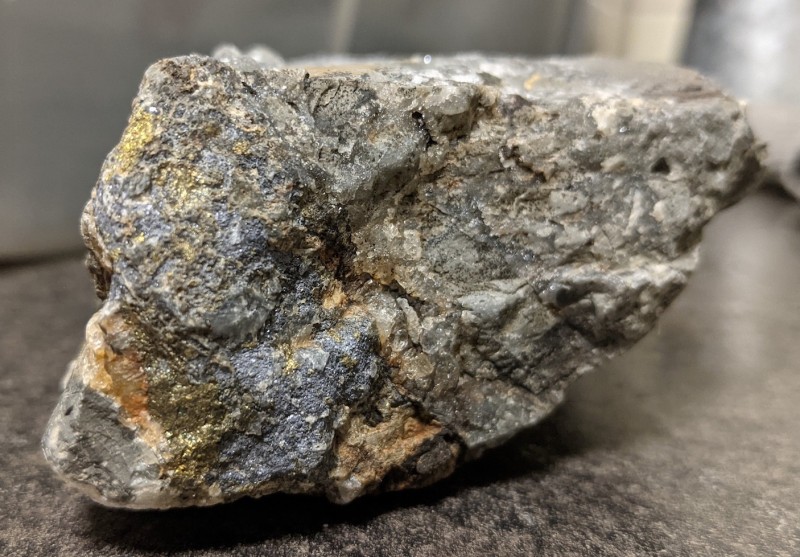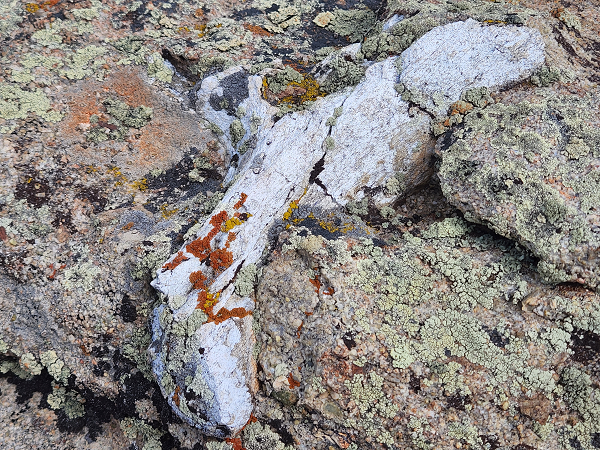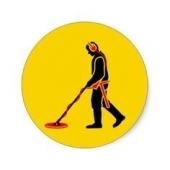Search the Community
Showing results for tags 'minerals rocks gems'.
-
I'm pretty sure the one is just slag. But the rounder one is really hard .
-
- 16 replies
-
- advice and tips
- nuggetfinder
-
(and 1 more)
Tagged with:
-
Can someone tell me if I have found a Native American artifact? It appears to be an image carved in slate. Found in a river bed near my home in NJ. It is approximately 2.5x 3.5 inches
-
Here's my first run rock tumbling. The petrified wood and dino bones used the rough grit #1 to tumble, the misc. stones used the #2 grit, as they were already somewhat smooth. There's 4 stages of tumbling normally with fresh stones, with rough edges. Next week I'll change the grit again. All these were found in the North Saskatchewan River.. Prospecting can create other hobbies too!
-
If someone else hasn’t, I try to post the links about diamonds found at Crater of Diamonds state park in Arkansas. Never been but would like to go sometime. I do have some diamond prospecting experience though. https://www.foxnews.com/lifestyle/lucky-arkansas-man-finds-3-29-carat-brown-diamond-state-park
-
Hi, I've had this "rock" for about 2 years and it has been on a shelf reminding that I must find out what type of rock is this? How does two seemingly different rocks get merged like that? Thanks for any help! Regards, Mike
-
I’m not sure if I’m in the right forum but I found these minerals I believe to be Turgite on Magnetite. I am the first to discover it and there are 1000 pounds plus in this location. I found it with my pulse dive. The pieces are heavy and slightly magnetic. The issue is I’ve never done a mining claim and so far every international attorney I’ve talked to says they only work with companies not individuals. I found them in Italy. Any help would be greatly appreciated!!
-
Nothing of great value here, just something fun to do while taking a break from prepping a house to put siding up and paint. I knew that there was septarian nodules found in Wyoming and Utah, so last night I decided to do a bit of research and figure out where they might be coming from. It's been raining lately so I didn't want to make a long journey just to get stuck or not be able to get all the way to my destination, so I decided to just go right outside of town now that I knew what I was looking for and where they might be, geologically speaking. There were a couple areas that seemed like they'd host septarian right close in. Actually I was so close to town still that there were houses within sight! Yet this location seems to be entirely unknown and uncollected. In a few minutes I was able to locate some highly fractured septarians. A bit more poking around and I was able to find some nodule fragments that were competent enough to not fall apart entirely. I decided to dig into the fragments a bit more and came out with on larger, seemingly unfractured large chunk which I spent about 15 minutes digging out with my rock hammer. It's bigger than it looks, it's about 75lbs. I have a 3ft rock saw that is big enough to cut this one with, but it's not set up just yet as I've moved and need to fix my new place up first with water, a proper electrical outlet, etc. I'll cut it later on though, along with the first two pieces. The big one will be a mystery since it's so covered with dirt that I can't see what kind of veining or crystals it has in it through the grime yet. I love cutting rocks, every one is like a surprise inside, never know what you will get. I did cut some of the smaller hand sized fragments I found. Unfortunately, at this locality all the nodules are extremely fractured. Even some of the more compentent rock still displays small fractures inside when cut. So the specimens aren't the greatest, but still kinda cool. And it's like a 5 minute trip from town too. Anyways, this is what the smaller ones look like. I think the cutting oil vs using water to cut them turns the grayish limestone part darker than normal septarians. They'd probably look a bit lighter and more gray/less brown if polished. This one turned out pretty nice I think. I wish I would have cut it about 3/4" further into the center and exposed that calcite geode effect a bit more though. Cutting rocks is like my zen time, I like it a lot. There is a real bonsai type art to sizing up a rock, looking it over carefully, and figuring out exactly where to put the cut. I have a long way to go to reach master bonsai cutter level. Anyways, a bit of a change from ID requests. Figured I'd post some more everyday prospecting/rockhounding type stuff here, just stuff to keep an eye out for. Maybe someone will see this and recognize them in the rough while out on a hike now too, as they are definitely one of those rocks easy to walk right past but that can look really cool when cut.
-
This guy has been finding a few diamonds! https://www.foxnews.com/lifestyle/man-finds-35000th-diamond-arkansas-park-his-50th-this-year
-
When prospecting, I try to keep an eye on everything around me. In this case I thought I was in formation about 95 million years old. With the K-T boundary above me, I was keeping a close eye on the rocks around me for dino fossils. I've found a lot of invertebrates before - clams, bacculites, ammonites, etc. I've found leaves, fish, and small mammal (mice) bones in younger formations, but never a dino bone before. Finally found my first one in the wild! It's well embedded in the rock. It's a sandstone/conglomerate, probably representing an old river delta or braided channels. So unfortunately this bone was a 1-off. A dinosaur died and the bones probably got spread asunder in an ancient river. I looked everywhere for the missing pieces, but this was it. You can really see the bone structure close up. I took the photos to a paleontologist at a local museum and he said he thought it was likely some part of the hip structure. He gave me some latin name for the exact bone but it went in one ear and out the other. It's just the end joint part, the rest of the leg or whatever it was has broken off. So unfortunately he said it wasn't of scientific interest to them since it was just a 1-off, and broken. But still, I've been wandering the hills since I was a child and in 3 decades I've never found a real vertabrate dinosaur bone. Pretty dang cool in my book, and one of my favorite finds ever! Was a long field trip, doing some exploration. Got some nuggets too. Nothing impressive, but almost paid for gas anyways. Popped these out with the 15" CC X Coil. I love being the first coil on a site, it's so much easier to really understand a patch and area seeing where each and every nugget came from. Well actually, not the first coil, the first coil was the 11" on the 6000, I discovered this spot with the 6000 and then brought the big gun in to have a look at what laid deeper. On that size/type gold I'm getting 2x the depth with the GPZ/15cc. Easy. Maybe more.
-
-
Anyone have pictures of rocks that mimic different things. Would love to see them. I have a couple gold pieces that mimic.
-
- 1 reply
-
- id help
- minerals rocks gems
-
(and 1 more)
Tagged with:
-
Lithium, Can the 6000 find it, hmmm where do you find it. There is a predicted world shortage by 2025, price as of 4/15/22 485,000. Yuan per tonne. Depressing news… I feel both ways about this. Lithium Lithium (pronounced /ˈlɪθiəm/) is the chemical element with atomic number 3, and is represented by the symbol Li. It is a soft alkali metal with a silver-white color. Under standard conditions it is the lightest metal and the least dense solid element. Like all alkali metals lithium is highly reactive, corroding quickly in moist air to form a black tarnish. For this reason lithium metal is typically stored under the cover of oil. When cut open lithium exhibits a metallic luster, but contact with oxygen quickly turns it back to a dull silvery gray color. Lithium in its elemental state is highly flammable. According to theory, lithium was one of the few elements synthesized in the Big Bang. Since its current estimated abundance in the universe is vastly less than that predicted by theory; the processes by which new lithium is created and destroyed, and the true value of its abundance, continue to be active matters of study in astronomy. The nuclei of lithium are relatively fragile: the two stable lithium isotopes found in nature have lower binding energies per nucleon than any other stable compound nuclides, save for the exotic and rare deuterium, and 3He. Though very light in atomic weight, lithium is less common in the solar system than 25 of the first 32 chemical elements. Due to its high reactivity it only appears naturally in the form of compounds. Lithium occurs in a number of pegmatitic minerals, but is also commonly obtained from brines and clays. On a commercial scale, lithium metal is isolated electrolytically from a mixture of lithium chloride and potassium chloride. Trace amounts of lithium are present in the oceans and in some organisms, though the element serves no apparent vital biological function in humans. However, the lithium ion Li+ administered as any of several lithium salts has proved to be useful as a mood stabilizing drug due to neurological effects of the ion in the human body. Lithium and its compounds have several industrial applications, including heat-resistant glass and ceramics, high strength-to-weight alloys used in aircraft, and lithium batteries. Lithium also has important links to nuclear physics. The transmutation of lithium atoms to tritium was the first man-made form of a nuclear fusion reaction, and lithium deuteride serves as a fusion fuel in staged thermonuclear weapons.
-
Gem silica is more rare and generally more valuable than chrysoprase, the next most vaulable chalcedony. It can sell for hundreds, or even thousands of dollars and ounce for prime, gem grade pieces. 2 years ago I discovered some old workings which I assume were initially copper prospects. A bit of research showed that an old gem chrysoprase mine from the 50's had been located a few miles away. I was unable to find the chrysoprase mine so I think that it was mislocated by authors of the paper, and I also think the owner and the authors misidentified the gem material, and the discovery I made is likely this mislocated "chrysoprase mine". The material at my discovery is what is called "gem silica" though. Chrysoprase gets it's green color from nickel. Gem silica gets it blue color from copper. I zapped the gem material with my XRF and it shows a healthy dose of copper and silicon, with minor impurities, meaning that my material is definitely gem silica. Gem silica has a hardness the same as quartz so it is resistant to scratches and good for jewelery. It resemebles chrysocolla which has similar colors (but less transparency) but chrysocolla only has a hardness of 2-4, meaning it makes a poor jewelery material as it can be damaged easily compared to gem silica with a hardness of 7, which is one reason why gem silica is valuable, aside from it's rarity. I removed this material with a rotary hammer and feathers and wedges. It causes it to fracture a bit more than I'd like. Next time I plan on taking my concrete saw out and trying to remove it in blocks. Much is fractured, so getting large, continuous pieces is difficult. Also, many parts of the vein end up with either iron or manganese impurities in it, causing a blackish tint and this reduces the quality according to traditional measures. Though, I think some of the blue/black pieces could be fashioned into some desirable jewelry as it is very unique. Interestingly, I did find some copper ore nearby that registered up to 150 ppm nickel. So, there may yet be a chrysoprase mine nearby for me to discover still. Either way, gem silica is a very rare and valuable material that few have heard of, so I thought I'd share a post on a bit of work I did at my mining claim to remove some samples for economic and scientific analysis.
-
-
Do any members here have experience with how Galena ore responds to a VLF detector? I'm just curious if some folks on the Upper Missouri river where early mining started ever dig it. I understand it can be found in placer deposits very near the surface.
-
There is a large area with red soil here in Tuscany, central Italy. Area where we have an intense mineralization, red dirt. Years ago I took this stone which I use to make some quick test at home. Hematite is an iron ore and that’s why I need pulse inductions too..



















